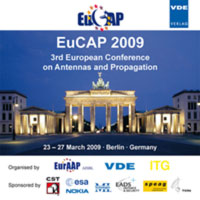Investigations on Free-Space Optical Links within SatNEx II
Konferenz: EuCAP 2009 - 3rd European Conference on Antennas and Propagation
23.03.2009 - 27.03.2009 in Berlin, Germany
Tagungsband: EuCAP 2009
Seiten: 5Sprache: EnglischTyp: PDF
Persönliche VDE-Mitglieder erhalten auf diesen Artikel 10% Rabatt
Autoren:
Leitgeb, E.; Awan, M. S.; Plank, T.; Nadeem, F.; Brandl, P.; Löschnigg, M.; Khan, M. S. (Institute of Broadband Communication, TU Graz, Inffeldgasse 12/I, 8010 Graz, Austria)
Perlot, N. (DLR, Institute for Communication and navigation, Weßling, Germany)
Capsoni, C.; Nebuloni, R. (Politecnico di Milano, Milan, in cooperation with IEIIT-Consiglio Nazionale delle Ricerche, Milan, Italy)
Javornik, T.; Kandus, G. (Department of Digital Communications and Networks, Jozef Stefan Institute, Ljubljana, Slovenia)
Muhammad, S. Sheikh (National University of Computer and Emerging Sciences (FAST-NU), Lahore, Pakistan)
Duca, E.; Betti, S. (Universita degli Studi di Roma Tor Vergata, Roma, Italy)
Inhalt:
The objective of this paper is to describe recent activities and investigations on FSO and the excellent results achieved within international COST actions (like COST 270, COST 291, COST 297 (HAPCOS)) and the 6th EU-framework programme (like SatNEx and CAPANINA). In a first part, the FSO technology is briefly discussed. Then its behaviour in different networking architectures is explained to elaborate its potential and suitability for the future Next Generation Networks (NGN). In a second part, the recent investigations in airborne and satellite application scenarios are discussed. Then, the short-range FSO systems built for last mile connectivity are explained. Finally, our recent investigation results on modelling the FSO channel under fog conditions and atmospheric turbulence are presented. Additionally, some recent major performance improvement results obtained by employing hybrid systems and using some specific modulation and coding schemes are presented.


